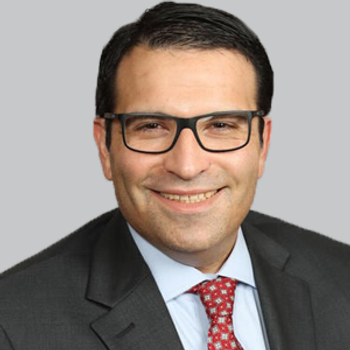
How Phase 3 TEMPLE Results Support CGRP Inhibitors as First-Line Preventives for Migraine: Jessica Ailani, MD
The director of the MedStar Georgetown Headache Center explained why data from trials like TEMPLE help strengthen the argument for CGRP therapies as first-line treatments for migraine. [WATCH TIME: 3 minutes]
WATCH TIME: 5 minutes
"Migraine is a lifelong condition, so treatments must be tolerable for long-term use. The CGRP therapies are showing that patients stick with them longer—and that translates to better outcomes and lower system-wide costs"
Over the years, calcitonin gene-related peptide (CGRP)-targeting treatments have significantly transformed migraine care by offering more precise and well-tolerated preventive and acute options. Unlike traditional therapies, these treatments directly block CGRP or its receptor–key players in migraine pathophysiology–leading to fewer migraine days and improve patient quality of life. While several of these therapies have been around for a number of years, they are not considered first-line therapies, with patients needing to fail at least 2 other treatments before initiating.
In late June, investigators
In the trial, atogepant also outperformed topiramate in a number of secondary outcomes, including mean monthly migraine days (MMDs) and other assessments like Patient-Reported Outcomes Measurement Information System (PROMIS). Additionally, 64.1% of patients on the CGRP treatment had at least 50% reduction in MMDs during months 4 and 6 of the double-blind period vs 39.3% of those on topiramate (P <.0001). Above all, the data affirmed 2024 recommendations from the American Headache Society and International Headache Society that CGRP pathway inhibitors may be used as first-line preventive treatment options for migraine.
Expanding on that thought, NeurologyLive® reached out to migraine expert Jessica Ailani, MD, director of the MedStar Georgetown Headache Center. In the interview, Ailani reinforced the growing consensus that CGRP-targeting treatments should be considered first-line treatment for migraine. In addition, she spoke on how treatments like atogepant are not only more tolerable but improve patient adherence, reduce healthcare resource use, and lower long-term system costs.
REFERENCE
1. AbbVie Announces New Data Demonstrating Atogepant (QULIPTA® / AQUIPTA®) Achieves Superiority Across All Endpoints in Phase 3 Head-to-Head Study Compared to Topiramate for Migraine Prevention. News release. AbbVie. June 18, 2025. Accessed July 7, 2025. https://news.abbvie.com/2025-06-18-AbbVie-Announces-New-Data-Demonstrating-Atogepant-QULIPTA-R-AQUIPTA-R-Achieves-Superiority-Across-All-Endpoints-in-Phase-3-Head-to-Head-Study-Compared-to-Topiramate-for-Migraine-Prevention
Newsletter
Keep your finger on the pulse of neurology—subscribe to NeurologyLive for expert interviews, new data, and breakthrough treatment updates.


































